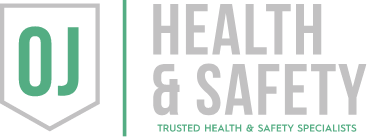When it comes to workplace safety, health and safety compliance isn’t just a legal box to tick — it’s your duty as an employer. Creating a safe, supportive, and hazard-free environment protects your team and strengthens your business. This then helps with compliance in the workplace.
Let’s break down what health and safety compliance really means and how you can meet your employer duties with confidence.
Why Health and Safety Compliance Matters
No one wants accidents at work. They’re costly, stressful, and often avoidable. As an employer, it’s your duty to prevent harm where you can. This doesn’t need to be complicated — just thoughtful and proactive.
By following a clear safety plan and carrying out regular health and safety risk assessments, you’ll be protecting your people and your reputation.
Understanding Employer Duties
All employers in the UK have legal responsibilities. These employer duties are in place to keep workers safe, both physically and mentally. You must take steps to identify risks, put controls in place, and review them often.
A key part of this is conducting regular health and safety risk assessments. These highlight hazards in the workplace and help you decide what action is needed.
Tip: Schedule reviews of your risk assessments every six months, or after any major change in the workplace.
The Role of Health and Safety Risk Assessments
Health and safety risk assessments are at the heart of compliance. They help you spot issues before they become incidents. Start by walking around the workplace and looking for anything that could cause harm.
Next, decide who might be at risk and how serious the harm could be. Once you’ve done that, put measures in place to control those risks.
Tip: Involve your team in the process. They often notice hazards others don’t, and it helps build a culture of safety.
Common Compliance Mistakes to Avoid
Many employers do the basics but miss important details. One common mistake is forgetting to update risk assessments after a change — like moving equipment or hiring new staff.
Another issue is failing to train staff on their roles in workplace safety. Everyone should know how to report risks and what to do in an emergency.
Tip: Keep training simple and regular. Short, engaging sessions work better than long, one-off courses.
Building a Culture of Workplace Safety
Compliance isn’t just about paperwork. It’s about creating a culture where workplace safety is part of everyday thinking.
Encourage your team to speak up if they see something unsafe. Reward good safety practices. Most importantly, lead by example — if you take safety seriously, your team will too.
Tip: Display safety reminders around the workplace to keep awareness high.
Moving Forward with Confidence
Health and safety compliance doesn’t have to feel overwhelming. With the right support, it can be straightforward and even empowering.
As an employer, your duty is clear: protect your people. That starts with good planning, honest conversations, and regular health and safety risk assessments.
If you’re unsure where to begin, we’re here to help. Our friendly, modern approach makes compliance less stressful and more supportive — exactly how it should be.
Need help with your workplace safety?
Get in touch today for our expert advice and practical tips to stay compliant with confidence.

